EGYPT
History

History

Cities in EGYPT
| El gouna | Hurghada | Makadi bay |
| Marsa alam | Sharm el sheikh |
History
Old Kingdom and First Intermediate Period
Four thousand years before the beginning of our era, people already lived along the Nile. Over time, many small peasant states emerged, each with its own leader. After that, the many states were merged into two states, a northern state in the delta and a southern state in the valley between present-day Cairo and Aswan.
Around 2900 BC. North and South Egypt were united by Menes, and he also became the first pharaoh according to a few Egyptologists. Memphis became the capital of his empire. Other scientists believe that farao Narmer was the first farao of the Egyptian empire.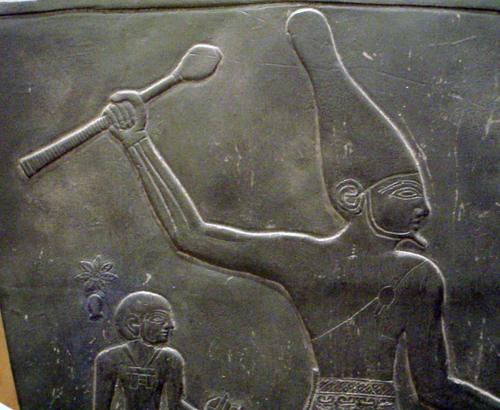 Image of pharao Narmer, maybe the first pharao of EgyptPhoto: Keith Schengili-Roberts CC3.0 Unported no changes made
Image of pharao Narmer, maybe the first pharao of EgyptPhoto: Keith Schengili-Roberts CC3.0 Unported no changes made
With the 3rd Dynasty began the Old Kingdom (c. 2650-2140 BC), a period of great prosperity and tranquility in Egypt. Around 2300 BC, during the 6th Dynasty, the power of the Pharaohs weakened as noble rulers of the nomes seized power. In addition, hostile nations from the south and the east threatened Egypt.
The First Intermediate Period (c. 2140-2040 BCE) was a period of economic hardship and political instability. There was famine and anarchy, and many small states emerged in the south. Around 2100 BC. Mentuhotep I restored order and unity in the empire. During this period, more than a hundred Pharaohs from the 7th through 10th dynasties ruled.
Middle Kingdom, Second Intermediate Period and New Kingdom
The Middle Kingdom lasted from 2040-1650 BC. During the 12th Dynasty, the Egyptian Empire was at peace and beautiful monuments and impressive tombs were built. A large part of Nubia was also conquered. Raids from the Hyksos made around 1650 BC. an end to the Middle Kingdom, followed by the Second Intermediate Period. The rule of the Hyksos lasted about a hundred years, and Ahmose of Thebes succeeded in defeating the Hyksos around 1550 BC. to expel. He became the founder of the 18th Dynasty, and with him the New Kingdom began, that of 1551-1070 BC. lasted. Under the pharaohs of this dynasty (including Hatsheptut, Tutankhamun, Akhnaten and Ramses II) Egypt grew into a world empire with Thebes as its capital. Egypt reached its greatest extent under Thutmose I and especially under Thutmose III.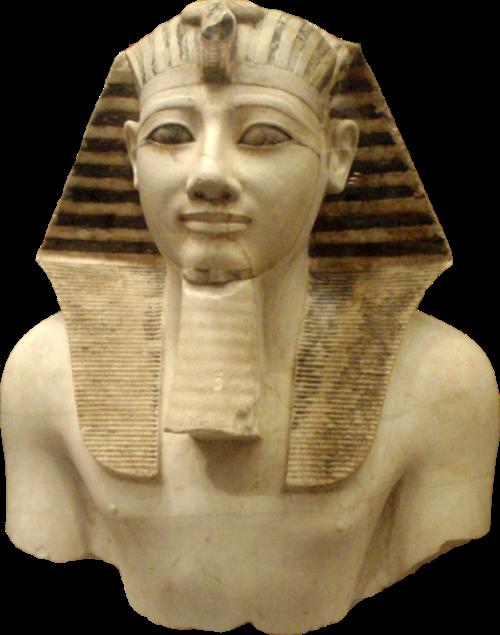 Thutmose III, pharaoh of EgyptPhoto: Keith Schengili-Roberts, CC 2.5 Attribution-Share Alike 2.5 Generic no changes made
Thutmose III, pharaoh of EgyptPhoto: Keith Schengili-Roberts, CC 2.5 Attribution-Share Alike 2.5 Generic no changes made
Third Intermediate Period and Late Period
After 1100 BC. Egypt's power came to an end due to internal troubles and invasions from foreign nations. In the Third Intermediate Period (1075-715 BC) Egypt was even divided into many small principalities, in which the priest-kings rule.
In the Late Period (715-332 BCE), Egypt was conquered by the Persians in 525 BCE. In 332 BC. Alexander the Great conquered Egypt and the Persians retreated: at that time Egypt became part of the Hellenistic world.
Alexander was followed by the Ptolemies, who made Alexandria the cultural and economic center of the country. All male Pharaohs today are called Ptolemy and all female Cleopatra. Cleopatra VII, among other things mistress of the Roman Emperor Julius Caesar, is said to be the last of the Ptolemies on the Egyptian throne.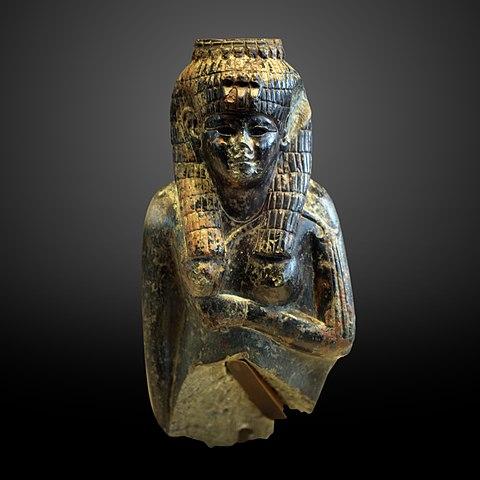 Cleopatra, Queen of Old EgyptPhoto: Rama, CC 3.0 France no changes made
Cleopatra, Queen of Old EgyptPhoto: Rama, CC 3.0 France no changes made
Roman Colony, Omayyads, Abassids and Fatimids
In 30 BC. Egypt was annexed by Emperor Augustus as an imperial province to the Eastern Roman or Byzantine Empire. Egypt did not improve economically in Roman times. Very high taxes were imposed on the inhabitants of the country that, as the 'granary of Rome', had to deliver large quantities of grain to Rome. The Byzantine era started for Egypt with radical reforms in the time of Emperor Diocletian in areas such as the political organization, the economy and the monetary system. Despite those reforms, however, this period was clearly one of decline. The population was divided into a small group of powerful landowners and the enormous masses, mainly peasants.
In the first half of the 7th century, Islam became a world power and Egypt was soon annexed by this world power and an Islamic country. In 641 AD. Egypt was taken by Amr-Ibn al-As on behalf of Caliph Omar and the new capital became Fustat. In 661, one of Omar's successors brought the Omayyad dynasty to power, who ruled their empire from Damascus.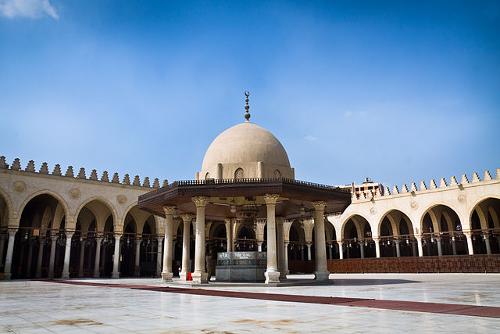 Amr-Ibn al-As mosque, EgyptPhoto: Mohammed Moussa CC 3.0 no changes made
Amr-Ibn al-As mosque, EgyptPhoto: Mohammed Moussa CC 3.0 no changes made
The Christian Coptic culture that still predominated in Egypt was slowly but surely replaced by the Islamic culture. Arabic became the main language and legislation became Islamic. The tax burden on Christians continued to increase, leading many to switch to Islam. The Coptic Christians revolted regularly, but had little success. In 750, the Omayyads were expelled by the Abbasid dynasty, who ruled their vast empire from Baghdad. One of the Abassidian governors, Ahmed Ibn Tolun, made Egypt an independent country for a short time (Tulunid dynasty, 870-905). Ahmed's successors were unable to keep the Abassids out and in 905 Baghdad's power was restored in Egypt.
Egypt was subsequently attacked by the Byzantines and by the Shia Fatimids, another Islamic power. Initially they managed to keep the Fatimids at bay, but in 968 they still conquered Egypt.
Under the rule of the Fatimids (969-1171), the city of Al-Qahira ("the Victorious", later Cairo) became increasingly important. Under Caliph Abu Mansur al-Aziz (975-996), the Fatimids reached their greatest heyday and ruled all of North Africa, Syria and Sicily.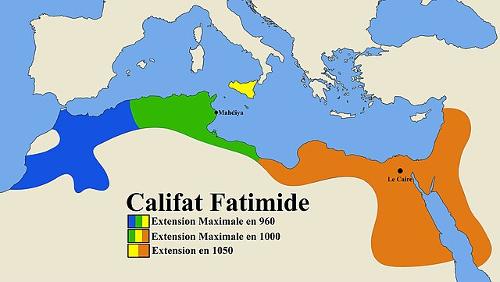 Evolution of the Fatimid state, EgyptPhoto: Jemeldz CC 4.0 no changes made
Evolution of the Fatimid state, EgyptPhoto: Jemeldz CC 4.0 no changes made
In the years 1062-1075 Egypt experienced a deep economic decline due to internal disputes, in which also great treasures of literature and art were lost. After that, authority was repeatedly in the hands of all-powerful viziers.
Crusaders, Ayyubids, Mamluks and Ottomans
The arrival of the Crusaders in the late 11th century was to change everything, especially when the Crusaders attacked Jerusalem. Egypt was also attacked, but successfully defended by the Seljuk Turks. In 1169, the Seljuks came to power briefly through Salah al-Din ("Saladin"), who founded a new dynasty, the Sunni Ayyubids (1171-1250). Saladin became known for his victories over the Crusaders. In 1250 the Turkish Mamluks came to power, originally they were slaves in the army of Salah al-Din (Mameluk is Arabic for slave). The Mamluks managed to keep aggressive nomadic tribes from Asia out of Egypt in the 13th century, including the Mongols, who were defeated in 1260 by Baybars, who subsequently proclaimed themselves sultan. A period of stability and prosperity now followed, but in the 14th century another period of crisis broke out by fighting Mamluks. A period of recovery followed in the 15th century.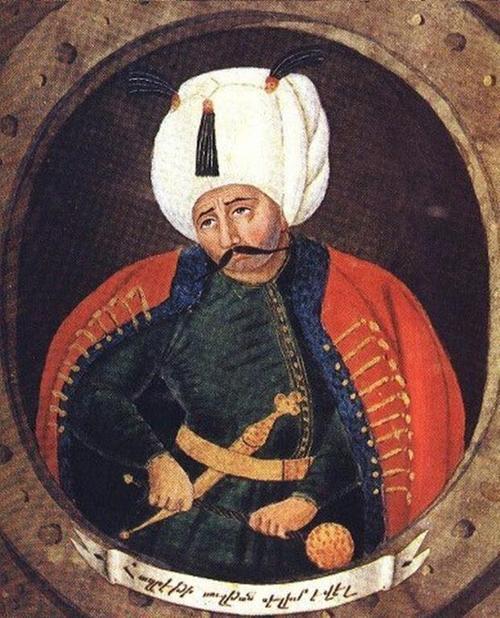 Selim I, ninth sultan of the ottoman EmpirePhoto: Word press CC4.0 International no changes made
Selim I, ninth sultan of the ottoman EmpirePhoto: Word press CC4.0 International no changes made
In 1517 the Ottoman Turks (Selim I) put an end to the rule of the Mamluks. However, they were allowed to keep the government of Egypt, which was not smart, because the Mamluks managed to gain more and more power. The constant infighting of the Mamluks brought Egypt into a dark period of economic hardship, famine and epidemics. However, they were able to hold their own with the weakening of the Ottoman Empire in the 18th century.
Mohammed Ali, Abbas I and English Rule
Also Napoleon, who occupied Egypt from 1798 to 1801, did not control the Mamluks and the French were even expelled by an alliance between the Turks and the English. The Mamluks quickly tried to regain power in Egypt, but were finally defeated in 1811 by Mohammed Ali (1805-1849). He became the founder of the last dynasty and the founder of modern Egypt. In 1805 he was proclaimed pasha (governor) of Egypt with the permission of the Turks. However, power went to his head and in 1840 he tried to expel the Sultan of Turkey together with his son. This attempt was prevented by the great powers.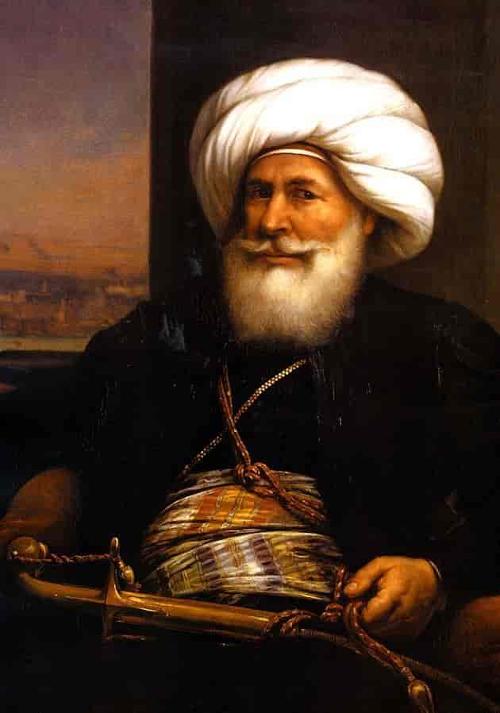 Mohammed Ali Pasja, EgyptPhoto: Auguste Couder in the public domain
Mohammed Ali Pasja, EgyptPhoto: Auguste Couder in the public domain
Mohammed Ali was succeeded by his grandson Abbas Hilmi I (1849-1854), who undid many of his grandfather's modern reforms. After the assassination of Abbas, Said Pasha (1854-1863) became governor of Egypt, and under his rule the Cairo-Alexandria railway was built and he was the basis for the construction of the Suez Canal. In 1867, Said Pasha's successor, Ismail Pasha, assumed the title of viceroy ("khedive").
At the request of the Western powers, he was deposed by the Sultan in Constantinople in 1879 and succeeded by his son Mohammed Tawfiq (1879-1892). Because Egypt was in fact ruled by foreigners and burdened with heavy financial burdens, a nationalist uprising led by Orabi Pasha ensued. After a massacre of a group of Europeans, Alexandria was bombed and the British occupation of Egypt was a fact. The British entered Cairo on September 15, 1882, and Egypt effectively became a British protectorate. Tawfiq died in 1892 and was succeeded by his son Abbas Hilmi II.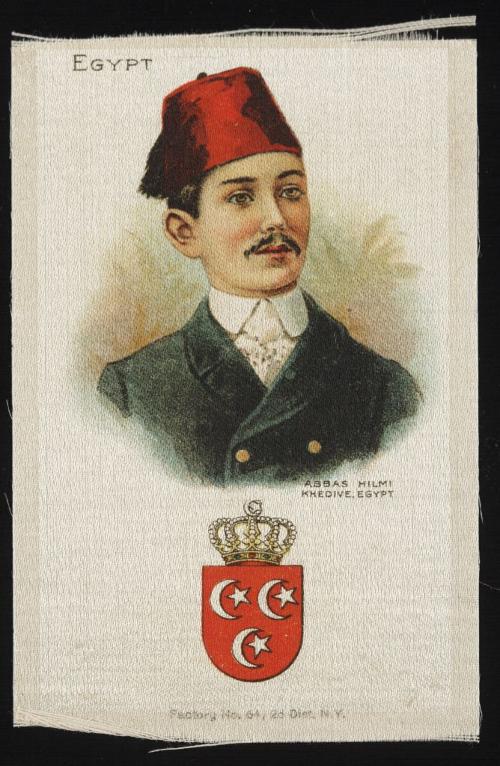 Abba Hilmi II, kedive of EgyptPhoto: Factory No. 64, 2nd District N.Y CC 2.5 no changes made
Abba Hilmi II, kedive of EgyptPhoto: Factory No. 64, 2nd District N.Y CC 2.5 no changes made
Abbas II was not really an enemy of the English, but the national movement wanted to run the country itself at all costs. In 1911 Lord Horatio Herbert Kitchener, who had recaptured Sudan in 1898, took over the administration. In 1913 Egypt received a parliament with fairly extensive legislative power and a new electoral system.
Egypt becomes a kingdom
When Turkey sided with the Central Powers in World War I, Egypt was officially proclaimed a British protectorate on December 18, 1914, and power rested with the British High Commissioner. After the war, the then High Commissioner, General Allenby, managed to persuade the government in London to unilaterally dissolve the protectorate (22 February 1922). The new leader of Egypt became Ahmed Faud, and the new leader of the nationalist opposition became Sa'd Zaghloel Pasha. Foead assumed the title of king and Egypt became a parliamentary monarchy. Zaghloel founded a new nationalist party, the Wafd. In 1935, the first free elections were held and these resulted in a Wafd majority; in May 1936 the new Wafd leader, Nahas Pasha, formed a cabinet composed entirely of fellow party members.
In 1936 Farouk became the new king (1936-1952), he succeeded his deceased father. The first measure he took was to dispatch Nahas, after which the country was ruled by so-called "palace coalitions." England remained closely involved with Egypt: the English army remained close to the Suez Canal and was allowed to provide the defense of Egypt. This turned out well, because in 1942 the Italian and German armies were defeated at Al-Alamayn (El Alamein), marking a turning point in World War II. Nahas,who had returned during the war, was fired again by Farouk in October 1944.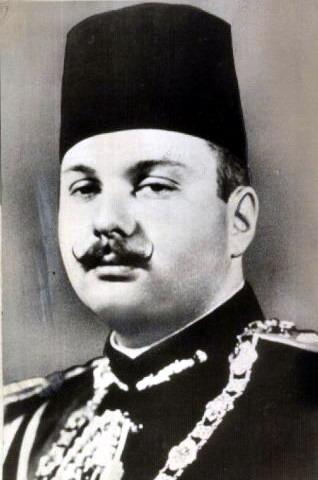 King Farouk of EgyptPhoto: ThutmoseIII in the public domain
King Farouk of EgyptPhoto: ThutmoseIII in the public domain
On March 22, 1945, Egypt, Lebanon, Iraq, Syria, Yemen, Saudi Arabia and Transjordan formed the Arab League in response to the increasing migration of Jews to Palestine, then under English mandate. The League wanted to support the Arab population of Palestine against the Zionists and fight the last vestiges of Britain's imperial position in the Middle East.
At the end of 1947, Palestine was divided into a Jewish and an Arab part, while Jerusalem became an international enclave. The English left Palestine and on May 14, 1948, the National Jewish Council proclaimed the sovereign state of Israel. This was the signal for the Arab neighboring countries, including Egypt, to attack Israel. But due to disagreement and a lack of army, the attack failed completely.
Nahas and Naguib: Egypt Becomes a Republic
In 1950, the Wafd Party won a large majority in the elections. Prime Minister Nahas then turned against Farouk and England. Saturday, January 26, 1952 would become known under the name "Black Saturday". A popular uprising threatened, and Farouk fired Prime Minister Nahas. He also sent parliament home and announced martial law. Some time later Farouk refused to appoint Mohammed Naguib as Minister of War, after which on 23 July 1952 twelve young officers led by Naguib staged a coup d'état. On July 26, 1952, Farouk left Egypt to live in exile.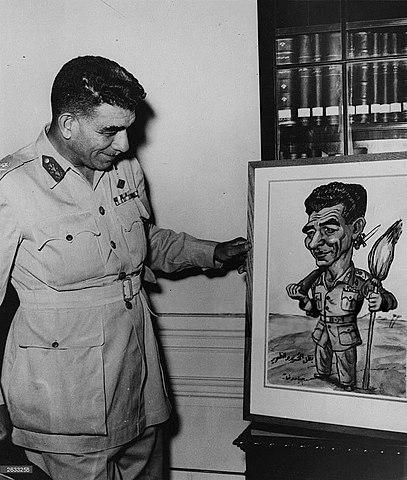 Mohammed Naguib, Egyptian politician and military figurePhoto: AshashyouCC 3.0 Unported no changes made
Mohammed Naguib, Egyptian politician and military figurePhoto: AshashyouCC 3.0 Unported no changes made
After the coup, the Revolutionary Council actually wanted a civilian government, but senior military led by Naguib quickly took over. He reappointed former Prime Minister Maher as Prime Minister. On June 18, 1953, the republic was proclaimed, with Naguib as president and he also remained prime minister. Gamal Abd al-Nasser, senior military officer, became Deputy Prime Minister and Minister of the Interior. In 1954 Naguib was pushed aside by Nasser and a number of officers. Nasser became Prime Minister and also Chairman of the Revolutionary Council.
Period Nasser and Suez crisis
In the same year, Nasser managed to get the British to leave the zone around the Suez Canal. In 1956, Nasser became president of the republic and requested support from the Soviet bloc for arms supplies. America insulted Nasser by refusing money for the construction of the Aswan Dam. On July 26, 1956, Nasser announced the nationalization of the Suez Canal. Israeli ships were no longer allowed to pass through the canal and the Israeli army entered Egypt on October 29, 1956. The war lasted only six days and the blockade was lifted by the Israeli army led by Moshe Dayan.
France and England also sent troops to the Suez Canal but were ordered by the United Nations to leave Egypt. France and England followed this up, and Israel also left Egypt after promises that a United Nations Emergency Force (UNEF) would be stationed at the Egyptian-Israeli border. So after the humiliating military defeat, Nasser was able to win a major political victory.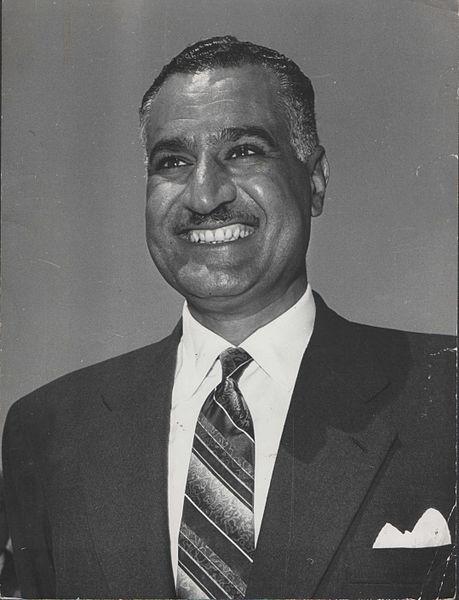 Gamal Abdel Nasser, 2nd president of EgyptPhoto: Stevan Kragujevic; Tanja Kragujevic CC 3.0 no changes made
Gamal Abdel Nasser, 2nd president of EgyptPhoto: Stevan Kragujevic; Tanja Kragujevic CC 3.0 no changes made
From that time on, he left the West behind and focused entirely on the Soviet Union, which reorganized the Egyptian army and financed the construction of the Aswan Dam.
On February 5, 1958, the VAR, the United Arab Republic, consisting of Egypt, Syria and Yemen, was established. Nasser was increasingly able to tighten his grip on political life within the VAR, and the Syrian bourgeoisie and military were deeply dissatisfied with the Egyptian central authority, especially after Nasser nationalized most of the major Syrian corporations in June 1961.
As a result, cooperation did not last long and on September 28, a number of Syrian officers committed a coup d'état and Syria seceded from the VAR.
In June 1962 a new system of government was introduced with the Arab Socialist Union (ASU) as the sole political party. Nasser continuously strengthened his position as the Arab world's chief leader over the following years, but his government experienced severe economic difficulties during this period.
At the time, there was a certain rapprochement between Egypt and Syria and a defense treaty was signed between the two countries in November.
Six Day War
In the spring of 1967, Nasser managed to get United Nations Secretary-General Oe Thant to withdraw the UN peacekeeping force from the Israeli-Egyptian border. The Palestinian Liberation Army took the place of the UN peacekeeping force. As a result, Israel lost the protection of its shipping in the Israeli port of Eilat. Nasser closed the Gulf of Aqaba to Israeli ships and pushed Israel to the limit.
Israel threatened military action, but Nasser clearly directed a confrontation with a number of provocations at the border. On June 5, 1967, the so-called Six-Day War began. The Egyptian army and the Palestinian Liberation Army were quickly overrun, another major defeat for President Nasser.
Nasser initially announced his resignation, but the people and parliament urged him to stay on. A week after the ignominious defeat, Nasser became prime minister and party leader as well as president.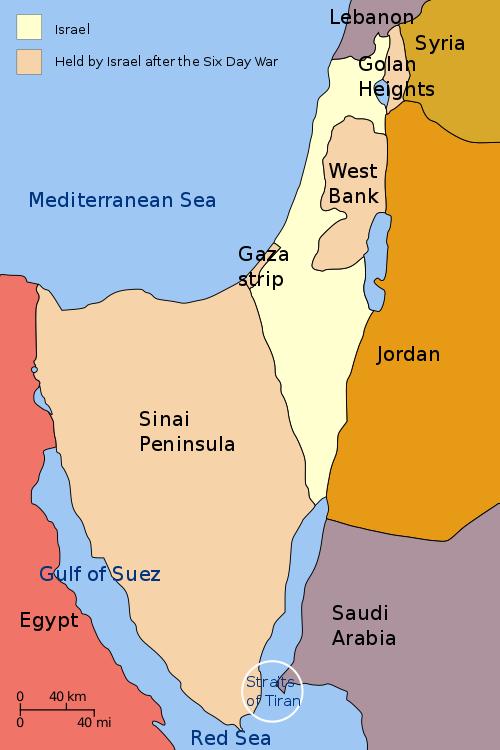 Situation after the Six Days War between Egypt and IsraelPhoto: Ling.Nut CC 3.0 Unported no changes made
Situation after the Six Days War between Egypt and IsraelPhoto: Ling.Nut CC 3.0 Unported no changes made
After the war with Israel, major changes took place in the Egyptian army command. However, a military coup against Nasser was thwarted. Student strikes and uprisings were repeated in the following years, mainly against the often half-hearted attitude of the Egyptian government to the struggle with Israel and against a lack of democracy in the universities.
Nasser dead, Sadat succeeds him
The time after 1967 was marked by a shaky truce with Israel and a dangerous internal situation. Major problems such as overpopulation, population poverty and the very vulnerable Arab unity were added to this. Egypt was in dire straits economically due to the closure of the Suez Canal. On the positive side, the United Nations passed a resolution stipulating that Israel should withdraw from the occupied territories.
Meanwhile, Nasser became increasingly dependent on the Soviet Union for supplies of weapons, food and medicine.
A series of border disputes with Israel ensued in 1968, and an offer from Israel to agree on mutually recognized borders was ignored by Egypt.
On September 28, 1970, President Nasser died of a heart attack. After Nasser's death, Vice President Anwar al-Sadat was elected president. In May 1971, large-scale purges were held among Sadat's political opponents, some of whom were sentenced to death.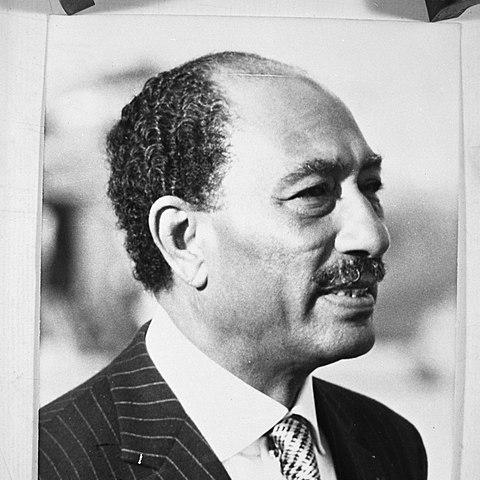 Anwar Al-Sadat, Egyptian politician and later President of EgyptPhoto: Anefo in THe public domain
Anwar Al-Sadat, Egyptian politician and later President of EgyptPhoto: Anefo in THe public domain
It was he who put an end to the presence of Russian soldiers in Egypt in 1972. Incidentally, the cooperation between the two countries continued, and civil advisers were allowed to continue to do their work. On October 6, 1973, the Arab-Israeli War began with attacks against Egypt in Sinai and Syria on the Golan Heights. Egypt was supported militarily in this war by the Soviet Union and the Arab States, Israel by the United States. On October 23, a ceasefire was accepted by the belligerent parties without a clear winner being identified. In March Egypt regained control of both banks of the Suez Canal.
After the war, Egypt received a lot of money from the Arab oil states to restore the economy and to pay off the debt to the Soviets. Slowly it became clear that Sadat increasingly focused on the United States and Western Europe. In March 1976, this resulted in the cancellation of the 1971 friendship and cooperation treaty with the Soviets, and for example arms supplies from the United States.
Peace with Israel
In 1973, a promised union between Egypt and Gaddafi's Libya was cancelled at the last minute by the Egyptians. As a result, relations with the neighboring country deteriorated and in July 1977 a brief border war broke out between the two countries.
In November 1977, Sadat paid a surprise visit to Israel and even spoke to the Israeli parliament, to the anger of the other Arab countries and the Palestinians. In late December of that year, Sadat and Israeli Prime Minister Begin met in the Egyptian city of Ismailiya and held talks that would later continue in the peace talks in Camp David and Washington, led by US President Carter. Shake hands between Sadat, Begin and president Carter of the USAPhoto: Government Press Office (Israel) CC 3.0 Unported no changes made
Shake hands between Sadat, Begin and president Carter of the USAPhoto: Government Press Office (Israel) CC 3.0 Unported no changes made
In March 1979, after difficult negotiations, peace was made with Israel, after which many Arab states severed their ties with Egypt. In 1981 Sadat took over. He had hundreds of opponents of his rule arrested, acted harshly against fundamentalists, and expelled hundreds of Russians for espionage. This likely cost him his life, as on October 6, 1981, he was killed in a military parade in Cairo by soldiers working with the fundamentalists.
Period Mubarak
Sadat was succeeded by Vice President Mohammed Hosni Mubarak, and he pledged to continue Sadat's policy. This left Egypt isolated in the Arab world and relations with Israel deteriorated due to Israel's actions in Lebanon. But the cautious democratization of political life started under Sadat was also continued under Mubarak. In 1978 the National Democratic Party was established as a successor to the ASU and new political parties were allowed on the right and left. The parliamentary elections of 1984 and 1987 brought Nasserists, Liberals, Muslim Brothers and the re-established Wafd Party to the Assembly, among others, but Mubarak's NDP retained a large absolute majority.
In his foreign policy, Mubarak maintained relations with the United States and Israel, although relations with Israel were considerably cooled by the Lebanon War of 1982. In December 1983, PLO leader Arafat visited Cairo, in 1984 Jordan re-established ties and in connection with the First Gulf War also followed Iraq and the Arab Gulf states. Mubarak also managed to improve relations with Moscow.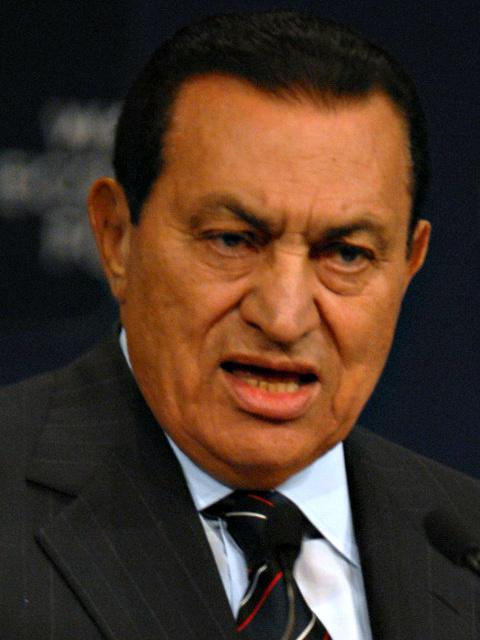 Hosni Mubarak, Egyptian presidentPhoto: World Economic Forum CC 2.0 Generic no changes made
Hosni Mubarak, Egyptian presidentPhoto: World Economic Forum CC 2.0 Generic no changes made
In the mid-1980s, the economic situation deteriorated due to the fall in oil prices. An uprising by the security police in cities like Cairo and Giza also caused a lot of internal unrest.
Extremist violence in Egypt caused Mubarak to crack down on the Muslim fundamentalists. For the time being, this did not help much, because dozens of people were killed in shootings in 1990 and the speaker of parliament, Rifaat al-Maghoeb, was murdered. Tourists were also killed in several attacks, causing a lot of damage to the economy.
After the Amman Conference in November, relations between Egypt and the other Arab countries improved. In March 1989, the Saudi King Fahd visited Egypt, which meant that Egypt was once again fully accepted by the other Arab countries. Only relations with Iraq were severely damaged when Egypt took an open position against Saddam Hussein during the Gulf crisis and sent many thousands of soldiers to Saudi Arabia. In 1993 Egypt experienced an increase in anti-government violence by Muslim fundamentalists.
In 1993, Mubarak was elected to a third term with almost 100% of the vote. He again engaged in the fight against the fundamentalists, followed by an attack on him in 1995, during a visit to the meeting of the Organization of African Unity (OAS) in Addis Ababa, Ethiopia. The parliamentary elections at the end of November 1995, accompanied by much violence and fraud, were a great victory for the ruling National Democratic Party.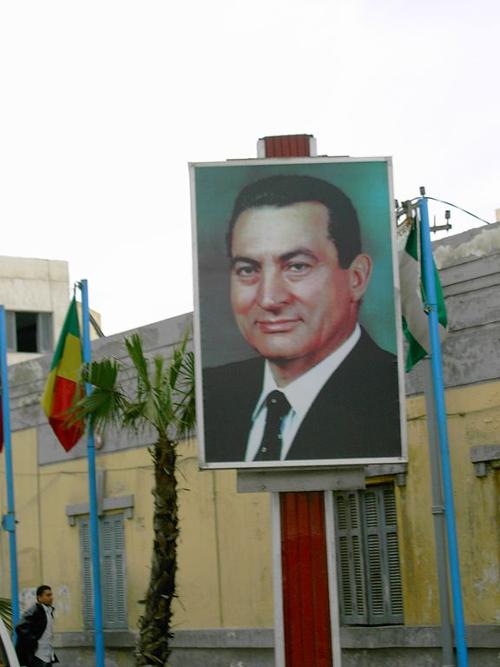 Poster Mubarak, presidential elections 1995Photo: Papillus CC 3.0 Unported no changes made
Poster Mubarak, presidential elections 1995Photo: Papillus CC 3.0 Unported no changes made
In November 1997, another bloody attack (58 tourists dead) in Luxor followed and tourism collapsed again completely. In 1999, Mubarak initially refused to run for a fourth term as president, but eventually ran for re-election. Again, he was reelected again with an overwhelming majority of 94%.
21st century
In the parliamentary elections of November 14, 2000, the NDP won 388 of the 454 seats. It was striking that of those 388 seats, 175 really belonged to NDP candidates. The remainder consisted of candidates who joined the NDP after the election. The big difference with the past is that these MPs, as independents, do not always have to support the government position. It was also striking that the 'Muslim Brotherhood' won 17 seats, making it the largest opposition party.
In October 2004, President Mubarak installed a new cabinet that has since implemented some far-reaching economic reforms. For a long time, the political reforms involved less. Bu suddenly, the president announced that the constitution (Article 76) will be amended to allow for multi-candidate presidential elections. Recently, the president presented new legislative changes that make it easier for political parties to organize and register. He also made proposals to expand the powers of parliament.
There is constant speculation about the succession of President Mubarak. During his unexpected admission to a Berlin hospital in the summer of 2004, the rumor storm re-emerged. Mubarak has denied speculation that he would prepare his son for president. The president has declined to appoint a vice president. The vice-president, a currently non-existent figure in the Egyptian political system, could, in the event of a - temporary - impossibility to govern, replace or succeed the president. It was recently announced that the appointment of a Vice President is currently under serious consideration. A committee has been set up to investigate the vice president's new duties. Poster Muslim BrotherhoodPhoto: Elagamytare CC 4.0 International no changes made
Poster Muslim BrotherhoodPhoto: Elagamytare CC 4.0 International no changes made
Parliamentary elections were organized at the end of November early December 2005. For the first time, there was an open debate that was reported by the media. The opposition, including members of the banned but tolerated Muslim Brotherhood, were given more freedom to campaign. New parties, such as Al-Ghad, also participated in the elections. Mubarak's ruling National Democratic Party got 331 seats of the available 444, while the Muslim Brotherhood managed to get 88 seats. The secular opposition has hardly gained any influence with eleven seats.
In June 2007, the National Democratic Party wins elections again. In April 2008, 25 leaders of the Muslim Brotherhood were sentenced to prison. In March 2009, Egypt hosted talks between rival Palestinian political parties Hamas and Fatah. In February 2010, Mohammed El Baradei, the former top nuclear officer at the UN, returns to Egypt. He wants to form a coalition for political change and participate in the elections scheduled for 2011. In January 2011 there are violent protests against the regime of President Hosni Mubarak. It appears to be the result of a wave of democratization in the Arab world, which started in Tunisia. More than at least 100 people have died. On February 11, 2011, Mubarak announced his resignation. Mohammed Morsi of the Muslim Brotherhood becomes the new president, but has since been impeached.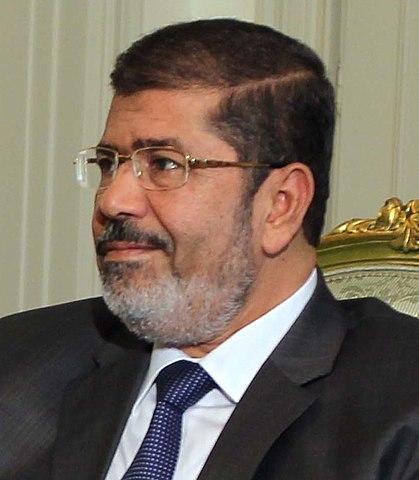 Mohamed Morsi Isa al-Ayyat. Egyptian politician of the Islamic Brotherhoodand later on president of EgyptPhoto: Cybaaudi CC 3.0 Unported no changes made
Mohamed Morsi Isa al-Ayyat. Egyptian politician of the Islamic Brotherhoodand later on president of EgyptPhoto: Cybaaudi CC 3.0 Unported no changes made
The situation is very unsettled in 2013. Egyptians voted by referendum in January 2014 for a new constitution. In May 2014, former army chief Abdul Fattah al-Sisi wins the presidential election. In 2015, 2016 and 2017 there was a lot of unrest because of terrorist actions by supporters of the Islamic State. In July 2017, Egypt joined the Saudi Arabian-led coalition against Qatar, accused of protecting terrorism.
In 2018 President Sisi wins a second term in elections against a sole minor opposition candidate. More serious challengers either withdrew or were arrested. In 2019, constitutional amendments were approved by the parliament and in a referendum. the President's and the military gained power. The presidential term was stretched from 4 years to 6 years so allowing El-Sisi to run for other two mandates.
In 2020 there is a dispute between Egypt and Ethiopia about the building of a dam by Ethiopia. Egypt fears that the dam will reduce the amount of water in the Nile. In March 2021, the Suez Canal will be blocked for several weeks as the 400-meter container ship Ever Given ran aground.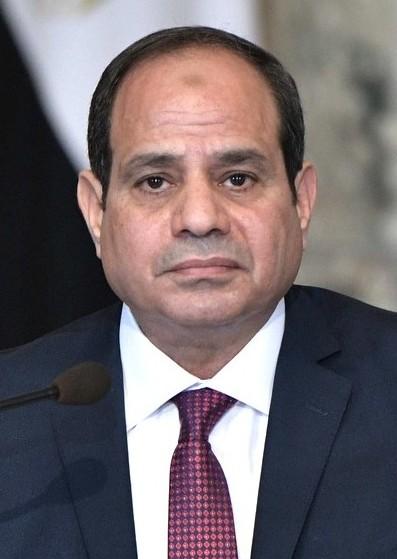 Abdul Fattah al-Sisi, president of EgyptPhoto: Kremlin.ru CC 3.0 Unported no changes made
Abdul Fattah al-Sisi, president of EgyptPhoto: Kremlin.ru CC 3.0 Unported no changes made
Sources
Ambros, E. / Egypte
Het Spectrum
Botje, H. / Egypte : mensen, politiek, economie, cultuur, milieu
Koninklijk Instituut voor de Tropen
Dunford, J. / Egypte
Van Reemst
Grünfeld, R. / Reishandboek Egypte
Elmar
Innemee, K. / Egypte
Gottmer/Becht
Kreissl, B. / Egypte
Elmar
Laet, R. de
Egypte
Rooi, M. de / Egypte
ANWB
Sattin, A. / Egypte
Van Reemst
CIA - World Factbook
BBC - Country Profiles
Copyright: Team The World of Info